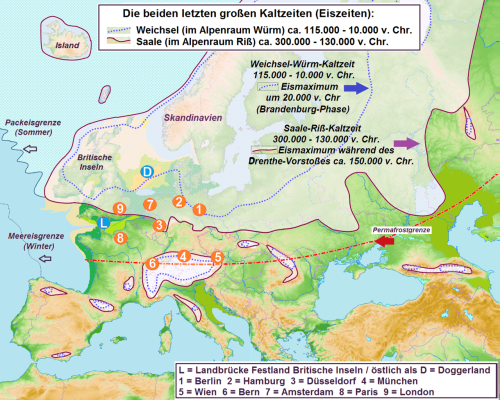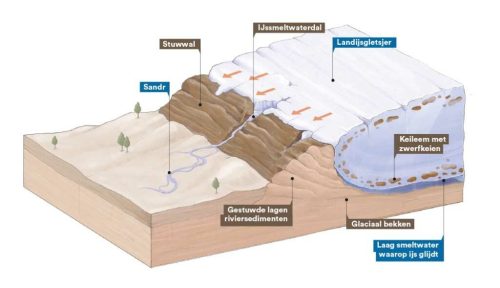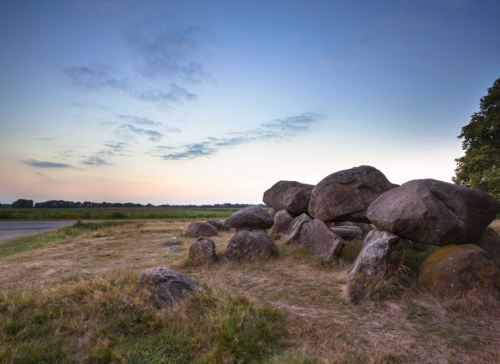#saalien
Saalien
The Saalien, also known as the Saale glaciation was one of the three largest glaciations that occured in Europe during the Pleistocene. The whole epoch lasted between 300,000 years to around 128,000 years ago. It was one of the largest glaciations in European history, the ice sheets reached the modern day city of Amsterdam, the Netherlands, pushing the permafrost border halfway through France and Switzerland making most of Europe too cold and too barren to live in.
It was also during the Saalian that the Homo Neanderthalensis evolved and thrived in Europe, Asia and the middle east. The name Saalian comes from the Saale river that flows through northern Germany, a branch of the Elbe river. Only people in Northern Europe use the term Saalian however. Other places in Europe use local names such as the Wolstonian in the UK, Moskovian in Russia, Rissglacial in the Alps and Illinois Glaciation in northern America. The Dutch briefly used their own therm as well, Drenthien.
The reason why so many parts of Europe have their own names for this time period is because of the deposits which are often related to the closed glacier or local rocks/landscape. It was also the epic Saalien glacier that brought stones down to the Netherlands which would later be used to build dolmens during the neolithic, these dolmens are still visible today. The glacier also left its marks in the European landscape, since I live in the Netherlands I will give a Dutch example.
Certain pits and dents in the landscape have been formed during the Saalien, the Dutch Solse Gat is such an example. The Solse Gat is a large dent in the ground in the province of Gelderland. A puddle formed inside the dent with rare vegetation growing around it. The dent was caused by a large piece of ice, part of the Saalien glacier, that was so heavy that it left a dent behind in the ground. The Solse Gat itself was therefore created and was seen as sacred grounds by the iron age people, Germanics. It was used as a place to worship the sun, Sol (hence the name solse gat). Later during the medieval ages it was thought that Satanists were holding black masses here and even until today, Christians are trying to ban any pagans from visiting the site for religious purposes.
All of Europe must have looked like a truly bizare place during the Saalien glaciation. The middle of Europe was covered by a harsh tundra landscape only survivable by the toughest animals adapted to the cold. In the modern mediterranean areas such as Italy, Greece and Spain, the landscape was covered by pine forests which can now be found in Scandinavia. If you would stand in the place that is now known as Amsterdam, you would be looking at a high wall of ice that marked the end of the gigantic glacier, just imagine the ice wall seen in Game of Thrones.
There were no modern humans, Homo Sapiens, in Europe yet. Our species only developed 100,000 years after the start of the Saalien so Europe was only inhabited by now extinct species, the Neanderthals and the Homo Heidelbergensis. The Saalien would be the last time that the ice sheets moved that far south. It was the second last ice age which was followed up by the Eemian period which marks the last ice age and is perhaps also the best known ice age.
Here are images of:
A map that shows how far south the ice reached,
How the ice wall in modern day Amsterdam would have looked like,
Solse gat, the dent left behind caused by the Saalian ice sheet,
A picture that shows how an ice sheet is capable of transforming the landscape,
A dolmen made out of rocks transported by the Saalien ice sheet,
Post link





